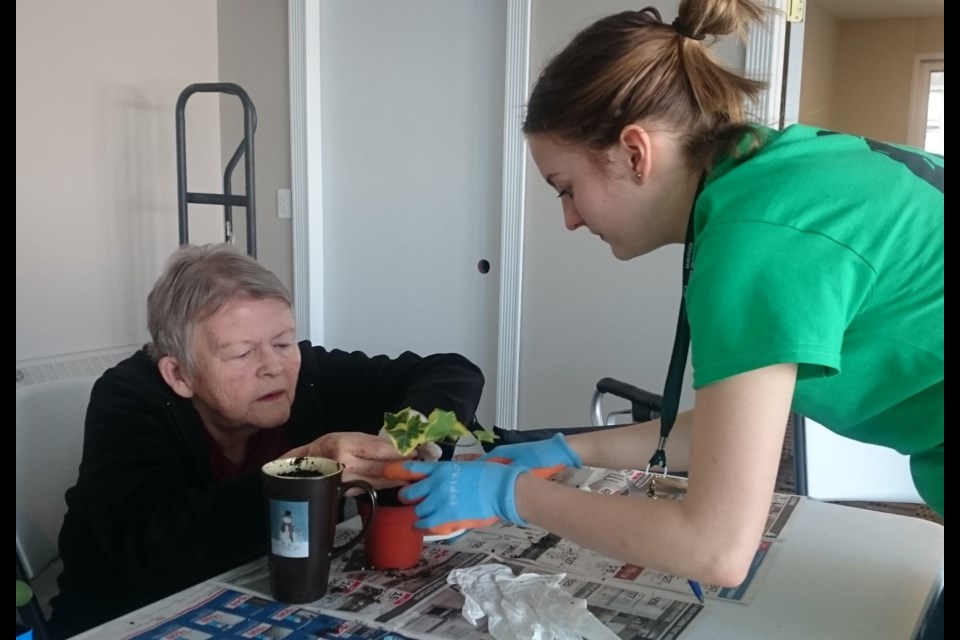Horticulture therapy is a formal practice that promotes a natural sense of wellness. The focus is on goal-centred activities with defined outcomes that encourage participants to engage in the natural world around us. Last week, horticulture therapy (HT) was the focus and this week, the share is going to be more about specific types of HT programs.
HT is becoming a more recognized treatment modality and HT programs should be designed with careful thought to ensure that the goals are being met. Horticulture therapy techniques help participants to learn new skills or regain abilities that have been lost due to injury or illness. HT can help to improve memory, cognitive abilities, task initiation, language skills and socialization. It can aid in improving coordination, strengthen muscles, and improve balance, endurance and independence. Horticultural therapists are professionals with specific education, training, and credentials in the use of horticulture for therapy and rehabilitation.
Any horticulture therapy program uses plants and the natural world to improve life socially, spiritually, physically and mentally. Programs have a specific purpose and will consist of a vocational, therapeutic or more clinical model or just focus on wellness. Vocational programs will aid in helping participants gain the skills to find work, while therapeutic or more clinical models will help to gain the best function after an illness or injury. The wellness model often has a big focus on socialization and developing an overall improvement in all facets of life. Therapeutic horticulture is an approach within HT that looks at promoting overall health and wellness.
To be an effective HT program, the sessions should be facilitated by a trained HT professional, who will assess client needs, and the setting and design a program that is gauged to meet specific needs or goals. The progress will be assessed using specific processes and procedures, documented and should evolve to meet the needs of the client at every stage.
HT sessions can meet a variety of goals and objectives and can involve the delivery of the program in a multitude of settings. Sometimes, the sessions may involve one client or may involve many depending on the needs and goals of each session. The most amazing part of HT is that not a lot of clinical equipment may be needed so programs can be offered with less cost and in simple surroundings. However, every session should always be planned appropriately to meet goals and allow assessment.
Being a part of nature even in small ways allows magical things to happen. The parallel process of human life and plant life is elemental and each can shape the other. For all of us, the inclusive nature of including plants, nature and the great outdoors whenever possible will improve the quality of life of one and all. For many years, I have shared, taught and lived with horticulture therapy and encourage you to consider including HT as an integral part of your life.
Hanbidge is the Lead Horticulturist with Orchid Horticulture. Find us at ; by email at [email protected]; on Facebook @orchidhort and Instagram at #orchidhort.
Tune into GROW Live on our Facebook page or check out the Youtube channel GROW




